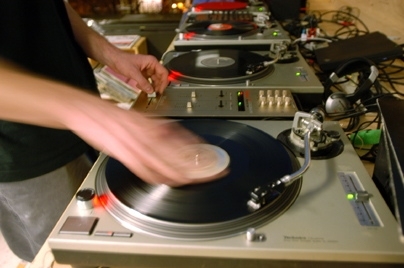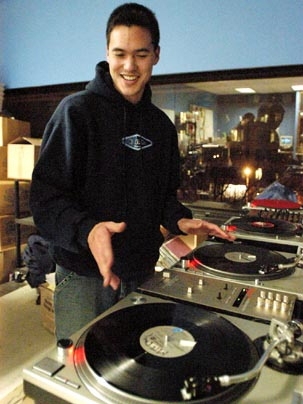There is more to being a successful DJ than just playing records and scratching, said Lars Blackmore of MIT's Dance Mix Coalition, the six-year-old student group now giving lessons to prospective DJs.
A good DJ needs to be able to feel the crowd and inject enough personality and creativity into the music without changing songs so much that people get frustrated. "You want to make a continuous flow of music," said Blackmore, a graduate student in aeronautics and astronautics. "It is actually surprisingly hard."
Because of the level of skill required, lessons seemed like the ideal way to bring new DJs into the club. Dan Lee, a senior in mathematics, and Dan Guarda, a junior in mechanical engineering, came up with the idea as a way of expanding the Dance Mix.
They held their first classes last spring with 20 students, Blackmore said. "This semester there were 30."
The five-week-long beginner course is offered for $20, in the Dance Mix studio in the Student Center. The welcoming studio offers oversized velvet couches and a picture window with a view of 77 Massachusetts Ave. The two turntables, mixer and sound equipment are expensive, Blackmore said. For students who do not wish to make such an investment, the Dance Mix course is perfect, because students can practice in the studio.
And a lot of that is required.
"Only about 50 percent of the beginners have it down at the end," of the course, said Blackmore. "The ones who learn it are the ones who practice." The large variety of mixing options--like playing one song's vocals over another melody--make for a steep learning curve.
One of the hardest skills to master is "beat juggling," said Guarda. "Beginner DJs would start by practicing 'looping'--which is just looping the same section over and over again by using two copies of the same record to keep a certain phrase or bar playing over and over again," he said. "The next step is to only use parts of the phrases or bars and specific sounds, like a snare, when 'juggling' back and forth between the two records to change up the beat and make it sound completely different."
By mastering these skills, a DJ can put her own personal touch into any party. But it can seem overwhelming to those new to the turntables.
"I was really surprised by how much went into it," said junior Christian Deonier, a junior in electrical engineering and computer science who took the beginner's course that wrapped up Dec. 8.
Originally, he took the class because it "sounded interesting" and wasn't expensive. He was surprised by the skill it took, but not daunted. He plans to continue practicing in the Dance Mix studio.
Though often a pricey hobby--DJs often supply their own records--some choose to parlay their pastime into a paying gig. Dance Mix Coalition can help with that as well. The club currently has a roster of 10 DJs who staff campus events and parties and offer music to suit the customer's taste.
To find out more, see the Dance Mix Coalition's web site.
A version of this article appeared in MIT Tech Talk on December 15, 2004 (download PDF).







